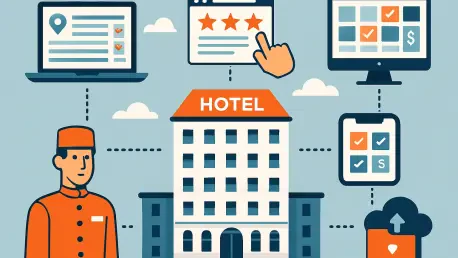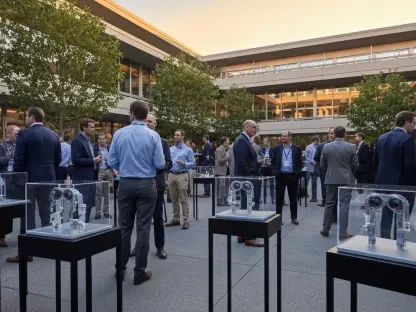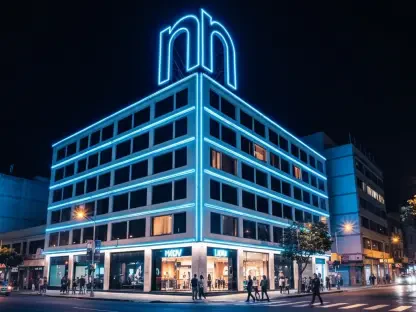I’m thrilled to sit down with Katarina Railko, a seasoned expert in hospitality with a deep background in travel and tourism. Katarina has honed her expertise across various facets of the industry, and she’s also a prominent voice in entertainment and events, frequently sharing her insights at expos and conferences. Today, we’re diving into the evolving landscape of hotel distribution, focusing on the critical role of multi-sourcing strategies, the limitations of traditional systems, the impact of technology, and what the future holds for hotels and distributors aiming to stay competitive.
Can you explain what multi-sourcing means in the context of hotel distribution and why it’s becoming so important?
Multi-sourcing in hotel distribution refers to pulling rates, inventory, and content from a variety of channels—think global distribution systems (GDSs), direct APIs, wholesalers, and aggregators. It’s become essential because travelers today demand more than just a room rate; they want rich details, personalized offers, and seamless experiences. Relying on a single source like a GDS often can’t deliver that level of depth or flexibility. Multi-sourcing allows hotels and distributors to broaden their reach, offer more choices, and cater to specific markets with tailored pricing or promotions, which is a game-changer in meeting modern expectations.
What are some of the key limitations of traditional GDS models that make multi-sourcing a necessary shift?
Traditional GDS models were built for a different era. They’re great for centralized inventory and large-scale transactions, but they fall short in displaying rich content. Room descriptions are often limited to a few lines, amenities might not even be mentioned, and there’s little room to highlight unique property features like being adults-only or wellness-focused. This creates a disconnect for travelers who can’t get a full picture of what they’re booking, leading to hesitation or frustration. GDSs also struggle with dynamic pricing and geo-targeted offers, which limits a hotel’s ability to adapt quickly to market changes. Multi-sourcing helps fill those gaps by tapping into sources that can showcase more and react faster.
What challenges do hotels and distributors encounter when they start adopting a multi-sourcing approach?
The biggest challenge is the complexity of managing multiple sources. Each channel might have different formats, business rules, or connection types, which can be a nightmare to coordinate. Hotels often lose visibility over where their rates are showing up, and distributors risk leakage to unintended platforms. This can strain partnerships and create operational headaches. For instance, if rates from one source undercut a hotel’s direct price on another platform, it leads to rate parity issues that erode trust and revenue. It’s a balancing act that requires careful oversight and the right tools to keep everything aligned.
Can you dive into the real-world consequences of poorly managed multi-sourcing and how it impacts business relationships?
Absolutely. Imagine a distributor with a preferred agreement to prioritize a specific hotel chain. If multi-sourcing isn’t managed well, a booking might get fulfilled through a wholesaler tied to a secondary marketplace instead of the preferred channel. The hotel misses out on the benefits of that partnership, and margins take a hit for both parties. Worse, it can breed mistrust—hotels start questioning whether distributors are honoring agreements, and distributors feel caught in a web of unintended consequences. These scenarios are common without proper controls, and they can dilute marketing investments and long-term collaboration.
How is technology stepping in to address these multi-sourcing challenges for hotels and distributors?
Technology is a lifesaver here. Modern platforms offer direct connectivity that bypasses unnecessary intermediaries, giving hotels and distributors more control over where and how their content appears. This means real-time updates to rates, inventory, and promotions, so if a hotel launches a geo-specific deal, it’s live across channels instantly. Tech also improves visibility—hotels can see where their rates are displayed, and distributors can flag potential leakage. Beyond that, it enables richer content delivery, like high-resolution images and detailed descriptions, which traditional GDS platforms often can’t handle. This creates a smoother, more transparent process for everyone involved.
Can you share an example of how technology helps protect preferred partnerships in a multi-sourcing environment?
Sure. Consider a global distributor working with select hotel brands they want to prioritize. With the right tech, they can set up direct connections to those suppliers, ensuring bookings flow through the most beneficial path. The system can also monitor for leakage—if a booking starts routing through a less desirable channel like a secondary wholesaler, it’s flagged for correction. This not only protects the commercial agreement but also boosts margins for both the hotel and distributor. Plus, it ensures travelers get consistent pricing and availability, which builds trust in the booking process. It’s a win-win when technology aligns strategy with execution.
Why is unlocking rich content through technology so critical for improving traveler engagement and conversion rates?
Rich content is everything in today’s market. Travelers want to see high-quality images, full lists of amenities, and detailed room descriptions before they commit. On traditional GDS platforms, content is often stripped down due to character limits or rigid formats, so a hotel can’t showcase what makes it special. Modern technology changes that by allowing hotels to supply unabridged, visually appealing content to distributors, who can then display it on their platforms. When a traveler sees exactly what they’re getting—whether it’s a spa package or an ocean view—they’re more likely to book. It shifts the competition from just price to experience and value, which drives higher engagement and conversions.
What do you see as the future of multi-sourcing in hotel distribution, and how should the industry prepare for it?
I believe multi-sourcing is only going to grow in complexity as more channels and technologies enter the ecosystem. The future will favor those who treat technology as a strategic asset, not just a tool. Hotels and distributors need to invest in infrastructure that offers transparency, protects commercial relationships, and keeps up with traveler demands for personalization and seamless experiences. Legacy systems like GDSs will still have a role, but they can’t be the sole focus. The industry must prioritize adaptability—whether it’s integrating new content sources or managing dynamic pricing across markets. Those who build robust, tech-driven multi-sourcing strategies will lead the way in driving growth and staying competitive in a crowded landscape.









